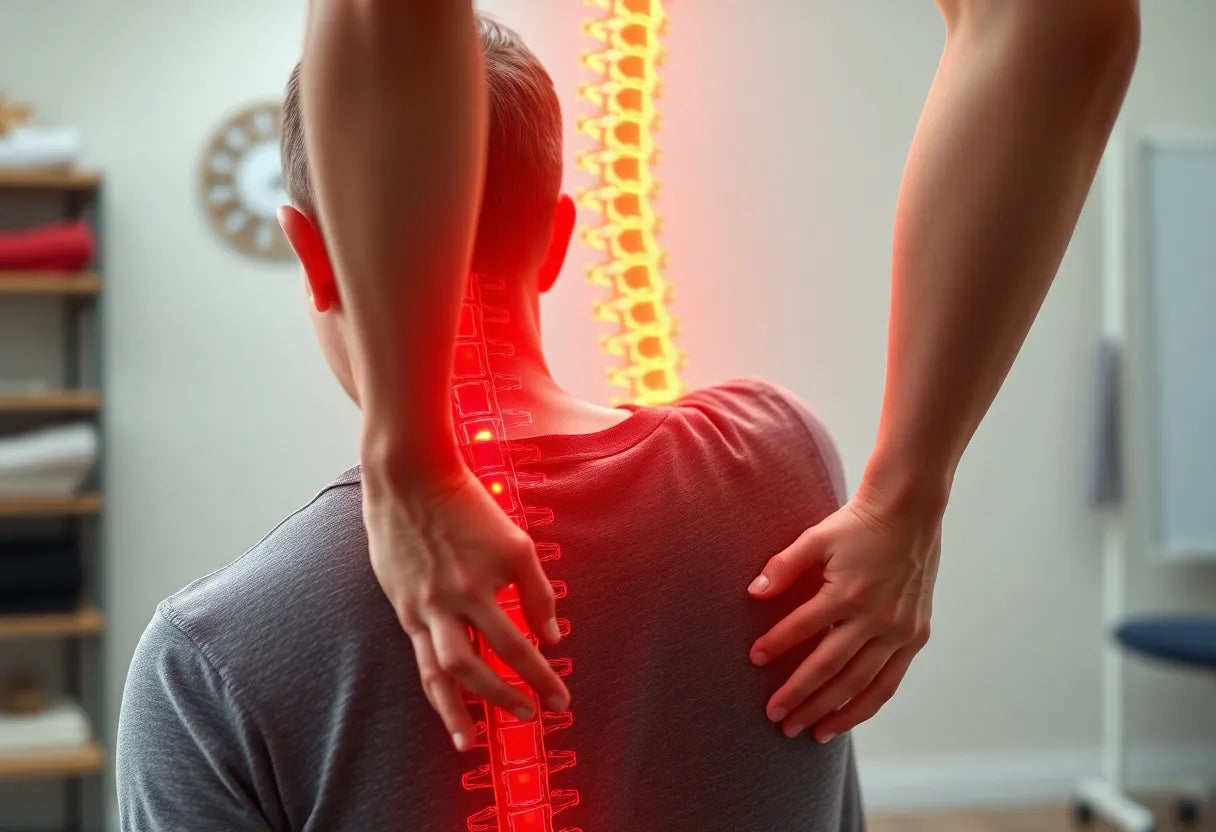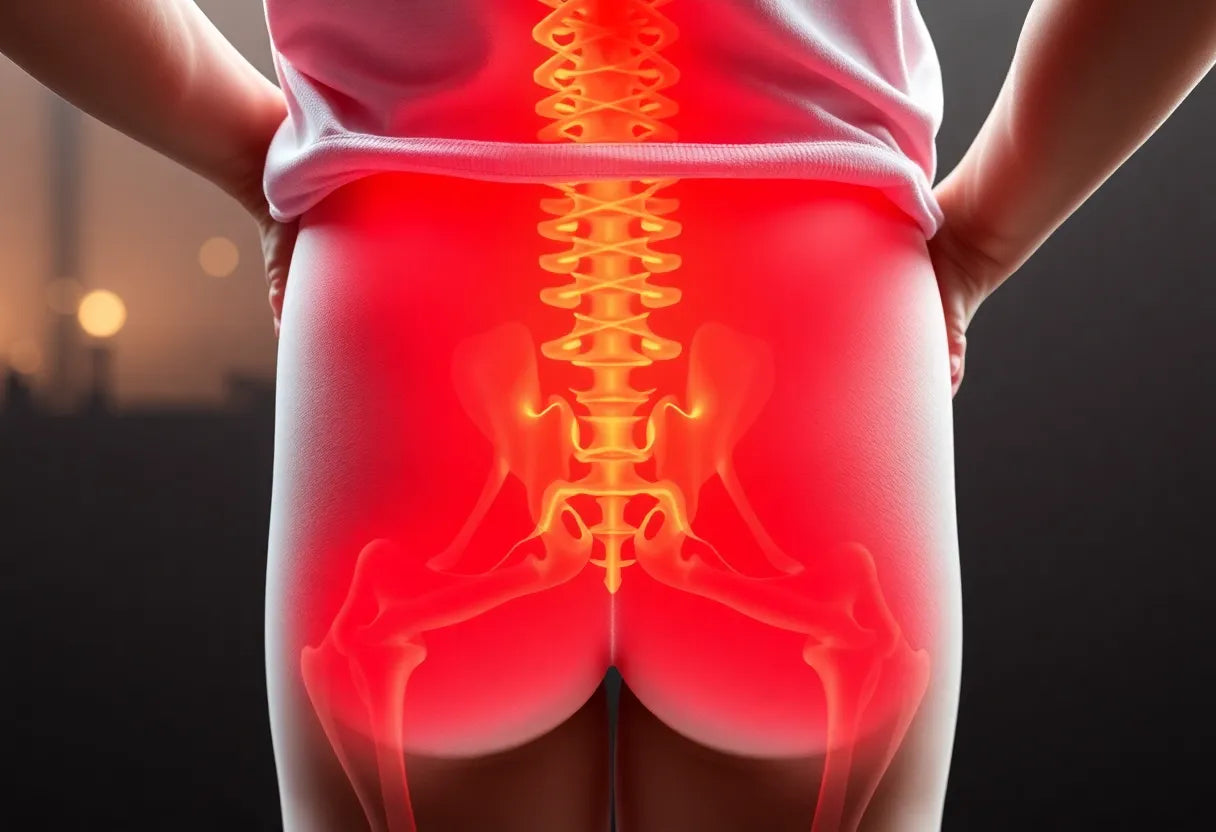Spinal stenosis is a condition that can significantly impact one's mobility and overall quality of life. Characterized by the narrowing of the spinal canal, this condition often results in nerve compression, leading to symptoms such as pain, numbness, and muscle weakness. While many cases of spinal stenosis are acquired over time due to degenerative changes or trauma, there is a lesser-known but equally important form known as hereditary spinal stenosis. This variant of spinal stenosis introduces a layer of complexity, as it involves genetic factors that predispose individuals to the condition from birth or early life.
Understanding hereditary spinal stenosis
Hereditary spinal stenosis, sometimes referred to as congenital spinal stenosis, is a condition where the spinal canal is narrower than usual due to genetic factors. This narrowing can occur due to congenital anomalies or hereditary disorders that affect the spine's structure. Unlike acquired spinal stenosis, which typically develops later in life due to age-related degeneration or injury, hereditary spinal stenosis can present symptoms much earlier, often during adolescence or early adulthood.
The distinction between hereditary and acquired spinal stenosis is crucial for accurate diagnosis and effective treatment planning. Understanding whether a case of spinal stenosis is hereditary or acquired can guide healthcare professionals in choosing the most appropriate management strategies. It also helps in predicting the condition's progression and potential complications.
The role of genetics in spinal stenosis
Genetics play a significant role in the development of hereditary spinal stenosis. Research has shown that certain genetic conditions, such as congenital kyphosis or specific bone diseases, can lead to a narrower spinal canal. These genetic factors can result in earlier and more severe symptoms compared to those seen in acquired forms of the condition. Early-onset cases of spinal stenosis often require a different approach to management and treatment, underscoring the importance of genetic understanding in these scenarios.
This blog post will delve deeper into the heritability factors associated with spinal stenosis, explore the symptoms that differentiate hereditary from acquired forms, and discuss management strategies. By unraveling the intricate relationship between genetics and spinal stenosis, we aim to provide a comprehensive understanding of this condition and offer insights into how it can be effectively managed.
hereditary spinal stenosis: causes and mechanisms
Hereditary spinal stenosis often stems from congenital anomalies or hereditary disorders that affect the spine's structure. These anomalies can include conditions such as congenital kyphosis, where the spine curves forward more than usual, or genetic bone diseases that lead to abnormal bone growth. These conditions result in a spinal canal that is narrower than normal, increasing the risk of nerve compression and the associated symptoms.
Unlike acquired spinal stenosis, which develops due to external factors like aging or injury, hereditary spinal stenosis is present from birth or develops early in life. This early onset can lead to more severe symptoms, as the narrowing of the spinal canal progresses over time. Understanding these genetic mechanisms is crucial for early diagnosis and intervention, which can significantly improve patient outcomes.
the genetic contribution and ongoing debate
Recent research has shed light on the significant genetic contribution to spinal stenosis, particularly in cases of central lumbar stenosis. Studies indicate a high heritability factor, suggesting that genetics play a crucial role in the development of this condition. However, there is still ongoing debate regarding the extent to which spinal stenosis itself is inherited.
While the condition may not be directly inherited, genetic predispositions to risk factors such as a naturally narrow spinal canal or susceptibility to disc degeneration are significant. These predispositions can increase the likelihood of developing spinal stenosis, highlighting the importance of understanding family history and genetic factors in assessing risk.
symptoms and early presentation
Hereditary spinal stenosis often presents with symptoms earlier in life compared to its acquired counterpart. Common symptoms include pain, numbness, tingling, and muscle weakness, which can significantly impact daily activities and quality of life. In hereditary cases, these symptoms may appear as early as the teenage years or in the 40s, whereas acquired forms typically manifest later, often after the age of 50.
The early onset and progression of symptoms in hereditary spinal stenosis can be more severe, necessitating a proactive approach to management and treatment. Early diagnosis through imaging techniques such as MRI, combined with genetic counseling, can help tailor management strategies to the individual's needs, potentially delaying the progression of symptoms and improving long-term outcomes.
conclusion
Understanding hereditary spinal stenosis requires a deep dive into the genetic factors that contribute to its development. By recognizing the causes, mechanisms, and symptoms associated with this condition, individuals and healthcare providers can work together to implement effective management strategies. Early intervention, informed by genetic insights, can play a pivotal role in improving the quality of life for those affected by hereditary spinal stenosis.
Management and prevention strategies for hereditary spinal stenosis
Managing hereditary spinal stenosis effectively requires a comprehensive approach, combining lifestyle modifications, early diagnosis, and medical interventions. Non-surgical management strategies are often the first line of defense, particularly for those with a family history of the condition. These strategies may include physical therapy to strengthen the muscles supporting the spine, ergonomic adjustments in daily activities, and the use of supportive devices.

Lumbar support belt
Stabilizes and relieves lower back pain with adjustable support for daily use.
Early diagnosis is crucial for individuals with hereditary spinal stenosis. Genetic counseling and MRI scans can help identify the condition at an early stage, allowing for timely interventions that can slow the progression of symptoms. For those at risk, adopting ergonomic products designed to support spinal health can be beneficial. These products, such as adjustable chairs and supportive mattresses, can help maintain proper posture and reduce strain on the spine.

Men's Posture Shirt™ - Black
Stimulates muscles and improves posture to help relieve pain and tension.
In addition to these measures, lifestyle changes such as maintaining a healthy weight, engaging in regular low-impact exercise, and avoiding activities that put excessive strain on the back are recommended. These preventive strategies can help manage symptoms and potentially delay the onset of more severe complications associated with hereditary spinal stenosis.
Visual content and myth-busting
Understanding the differences between hereditary and acquired spinal stenosis is essential for both patients and healthcare providers. The following table highlights key distinctions between these forms of spinal stenosis:
| Feature | Hereditary Stenosis | Acquired Stenosis |
|---|---|---|
| Onset | Early (teens–40s) | Later (50+) |
| Causes | Congenital canal, Bone disorders | Age-related degeneration, Injury |
| Symptoms | Early/severe | Gradual onset |
It's important to dispel common myths surrounding hereditary spinal stenosis. One prevalent misconception is that all spinal stenosis is directly inherited. In reality, while the condition itself may not be strictly hereditary, genetic predispositions to certain risk factors, such as a naturally narrow spinal canal or disc degeneration, play a significant role. Understanding these nuances can help individuals better assess their risk and seek appropriate preventive measures.
Frequently asked questions
Can spinal stenosis be inherited?
While spinal stenosis itself is not directly inherited, genetic predispositions to risk factors such as a narrow spinal canal or disc degeneration can increase the likelihood of developing the condition. These genetic factors are particularly significant in early-onset cases.
What are the signs if it's hereditary vs. acquired?
Hereditary spinal stenosis often presents with symptoms earlier in life, such as in the teenage years or 40s, and tends to be more severe. In contrast, acquired spinal stenosis typically develops later, often after the age of 50, with a more gradual onset of symptoms.
What genes or genetic syndromes are associated?
Common genetic conditions linked to hereditary spinal stenosis include congenital kyphosis and certain bone disorders that result in a congenitally narrow spinal canal. These conditions can predispose individuals to the early development of spinal stenosis.
What are the differences in prognosis or management?
Prognosis and management strategies differ between hereditary and acquired spinal stenosis. Hereditary cases require early diagnosis and often involve genetic counseling and lifestyle adjustments to manage symptoms effectively. Acquired cases may focus more on addressing age-related changes and may involve different therapeutic approaches.
By understanding these distinctions and addressing common questions, individuals can better navigate the complexities of hereditary spinal stenosis, ensuring they receive informed care and support.
Kilder
- Bonati Spine Institute. "Causes of Spinal Stenosis."
- American Academy of Orthopaedic Surgeons. "Lumbar Spinal Stenosis."
- ADR Spine. "Is Spinal Stenosis Hereditary?"
- Harvard Health Publishing. "Spinal Stenosis: Treatment Options for Managing Symptoms."
- Cleveland Clinic. "Spinal Stenosis."
- Cary Templin MD. "Cervical Stenosis."
- PubMed Central. "Genetic and Molecular Aspects of Spinal Stenosis."
- Commons Clinic. "Innovations in Spinal Stenosis Treatment."
- Mayo Clinic. "Spinal Stenosis: Symptoms and Causes."
- IU Health. "Consider These Spinal Stenosis Treatments Before Committing to Surgery."
- Premia Spine. "Is Spinal Stenosis Hereditary?"
- Brigham and Women's Hospital. "Spinal Stenosis Treatment."
- Healthgrades. "6 Things to Know About Spinal Stenosis."
- NYU Langone Health. "Nonsurgical Treatment for Spinal Stenosis."
- UPMC. "Degenerative Spinal Stenosis."
- Michigan Medicine. "Spinal Stenosis."
- NewYork-Presbyterian. "Spinal Stenosis Symptoms."
- Froedtert & the Medical College of Wisconsin. "Spinal Stenosis Symptoms and Treatment."


















